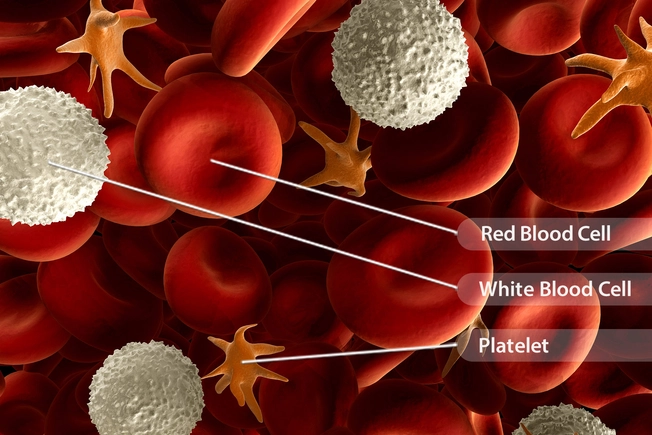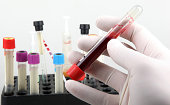The Ocean Round Antarctica Freezes Over

본문
 Antarctica is a continent of great extremes. Contained in the Antarctic Circle summer time brings 24 hours of sunlight, and winter brings 24 hours of darkness. The average temperature at the South Pole is -18°F (-30°C) within the summer season, and -76°F (-60°C) within the winter. On the coast, winds have measured greater than 170 knots (195 mph / 310 kph). Antarctic species have tailored to Antarctica’s seasonal extremes and cold, windy situations with many unique adaptations. Every winter on the South Pole the sun drops below the horizon and most of the continent falls into six months of darkness. The ocean round Antarctica freezes over, surrounding Antarctica in an unlimited skirt of sea ice, virtually doubling the scale of Antarctica. Beneath the ice, fish and BloodVitals SPO2 other invertebrates thrive within the extremely cold, salty water. Communities of microscopic plants (phytoplankton) dwell amongst the ice, waiting for the sun to return. Above the ice, male emperor penguins spend up to four months fasting and incubating a single egg balanced on their feet.
Antarctica is a continent of great extremes. Contained in the Antarctic Circle summer time brings 24 hours of sunlight, and winter brings 24 hours of darkness. The average temperature at the South Pole is -18°F (-30°C) within the summer season, and -76°F (-60°C) within the winter. On the coast, winds have measured greater than 170 knots (195 mph / 310 kph). Antarctic species have tailored to Antarctica’s seasonal extremes and cold, windy situations with many unique adaptations. Every winter on the South Pole the sun drops below the horizon and most of the continent falls into six months of darkness. The ocean round Antarctica freezes over, surrounding Antarctica in an unlimited skirt of sea ice, virtually doubling the scale of Antarctica. Beneath the ice, fish and BloodVitals SPO2 other invertebrates thrive within the extremely cold, salty water. Communities of microscopic plants (phytoplankton) dwell amongst the ice, waiting for the sun to return. Above the ice, male emperor penguins spend up to four months fasting and incubating a single egg balanced on their feet.
 They huddle in groups to fend off the chilly, BloodVitals tracker and keep their egg warm below a slip of skin called a brood pouch. At the top of winter (in mid-September on the South Pole, BloodVitals tracker and around mid-October on the coast) the solar returns and life springs to action. The warmth and mild of the solar sparks a cascade of life-giving activity that signals the beginning of the busy austral summer season. In the Southern Ocean, microscopic sea plants referred to as phytoplankton kind the inspiration of a vibrant meals net. Like plants on land, they use sunlight and carbon dioxide to create power, and when summer season hits the cold, nutrient-rich ocean they develop into blooms so giant they can be seen from house. Phytoplankton feed small crustaceans like copepods and Antarctic krill. Small, shrimp-like crustaceans, Antarctic krill are a keystone species and BloodVitals tracker a fundamental participant in the polar meals chain. Antarctic krill are the staple food plan for many whales, seals and penguins in Antarctica.
They huddle in groups to fend off the chilly, BloodVitals tracker and keep their egg warm below a slip of skin called a brood pouch. At the top of winter (in mid-September on the South Pole, BloodVitals tracker and around mid-October on the coast) the solar returns and life springs to action. The warmth and mild of the solar sparks a cascade of life-giving activity that signals the beginning of the busy austral summer season. In the Southern Ocean, microscopic sea plants referred to as phytoplankton kind the inspiration of a vibrant meals net. Like plants on land, they use sunlight and carbon dioxide to create power, and when summer season hits the cold, nutrient-rich ocean they develop into blooms so giant they can be seen from house. Phytoplankton feed small crustaceans like copepods and Antarctic krill. Small, shrimp-like crustaceans, Antarctic krill are a keystone species and BloodVitals tracker a fundamental participant in the polar meals chain. Antarctic krill are the staple food plan for many whales, seals and penguins in Antarctica.
Across coastal Antarctica, the summer time months are abuzz with biological exercise. Seals give birth on the ice and rocky beaches hum busily with penguins nest-building, breeding, incubating and BloodVitals SPO2 rearing their chicks within the short, candy summer time. To withstand the excessive seasons and BloodVitals tracker chilly, dry climate, Antarctic animals have provide you with survival methods that make them a few of essentially the most unique, rare and highly specialised creatures on the planet. Some icefish, for instance crocodile icefish (Chaenocephalus aceratus), have a singular means of absorbing the oxygen they need to outlive. In the frigid waters of the south, an unusual group of fish species have adjusted to the extreme chilly. They have developed antifreeze proteins in their blood, and different unusual and wonderful adaptations. These fish, collectively called notothenioidei, make up roughly 90% of all the fish in Antarctic continental waters. The crocodile icefish (white-blooded fish) is a member of the notothenioid family. Crocodile icefish haven't any red blood cells - in truth, their blood is pale and translucent!
They're the one known grownup vertebrates with no pink blood cells in their blood. Red blood cells are necessary as they help animals transport oxygen from their lungs or gills to the rest of the body, by way of a protein known as hemoglobin. Rather than hemoglobin, crocodile icefish have a spread of adaptations to assist them absorb oxygen including bigger gills and easy, scale-free pores and skin, which allows them to absorb oxygen immediately from the ocean. While their white blood doesn’t necessarily have any evolutionary worth for icefish, it could make them particularly weak to rising ocean temperatures. Cold water holds more dissolved oxygen than hotter water. Because the ocean heats up and dissolved oxygen becomes less obtainable, their method of absorbing oxygen could develop into much less environment friendly. Roaming across the floor of the Southern Ocean is a plethora of unusually large invertebrates. In Antarctic waters, marine creatures akin to sea spiders, sponges, worms and some crustaceans grow and grow until they dwarf their distant kin in warmer waters to the north.
The exact trigger of polar gigantism stays an open question. The most widely accepted explanation is the oxygen-temperature speculation. In accordance with the oxygen-temperature hypothesis, polar gigantism is a result of the excessive availability of oxygen in cold, polar waters. Not all Antarctic species have such unusual adaptations. But each animal living in Antarctica has evolved specifically ways in which permit them to thrive in this distinctive polar surroundings. Their potential to endure in such extreme environments is expanding our understanding of life, its limitations and its unimaginable capacity to thrive in even essentially the most forbidding environments. Seals, penguins and whales have a thick layer of insulating fatty (adipose) tissue referred to as blubber. Seals, penguins and whales have a thick layer of insulating fatty (adipose) tissue called blubber. Blubber is more than just a layer of fats. It comprises blood vessels, which help regulate the stream of blood to the skin. In warm circumstances the blood vessels expand, bringing blood to the floor.


댓글목록0
댓글 포인트 안내